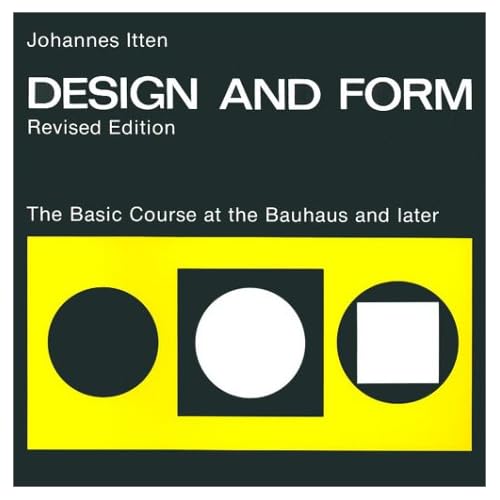
This book is a summary of the introductory course at the Bauhaus in Weimar, Germany originally given in the 1920's and written in 1963. Although, now nearly 90 years have passed since this course was first presented to students the basic theories and ideas developed remain with us. Indeed, many aspects of the Art of Photography course have inspiration from this blueprint in art education. The book intersperses Itten's thoughts on the creative process with practical examples created by former students as they attended the course.
The influence of Itten and the Bauhaus was brought home this weekend when I visited the Munich Modernist Pinakothek, the cities principal museum of modern art and design. Many former students and teachers had works presented centrally within the Museum.
Itten was very much influenced by Eastern ideas on relaxation and focus of the mind, many exercises began with meditation, rhythmic motions and breathing, to put students into the right frame to begin the creative process. Modern books on photography, particularly underwater photography also propose such techniques. I find them of great value, and prior most dives I spend a few minutes on the boat emptying my mind and attempting to visualize the images I will attempt to create.
The book divides into several sections, each building on the other:
1. Chiaroscuro - the contrast between light and dark, a study and exercises in the graduation of tone between pure white and complete black. He proposes taking famous images from the art world and reducing them to tonal areas of gray.
2. The theory of colours - essentially an introduction to the concept of colour that he expands on in "The Elements of Color". This develops the idea of the colour wheel and how different colours harmonize or contrast.
3. Material and Texture Studies - Here students are encouraged to gather and combine different materials and textures and illustrate them in ways that drive to the essence rather than simply reproduce the form. Very much a study of contrasts and one with a challenge to photographers, how do you reproduce photographically the sense of something, going beyond colour and shape.
4. The Theory and Practice of Forms - He expands on the concept of lines, triangles, circles, and squares, how they combine in composition, in particular how shapes can be used to tile a plane. Of value to me were the examples in the use of points and lines and how different compositions can lead the eye to a single point or leave the viewer continually moving from one place to another.
5. Rhythm - This is explained both as a study in repetition, but also the representation of flowing movements. Exercises set for the students include drawing musical forms, i.e. listening to music and finding a pictorial representation.
He concludes with Subjective Forms, the idea that all people, however, talented in art, have within them a style specific to themselves. Much of the course is an exploration of that subjective style through a series of exercises to build skills, but explore personal expression.
I have found it very difficult to summarize this work, I find it at the same time inspirational and baffling. I guess a weekend studying this book is not enough, I suspect I will return time and again to this small volume learning more and more from it as the course progresses. I must say that this is an almost ideal companion volume to this course.

No comments:
Post a Comment